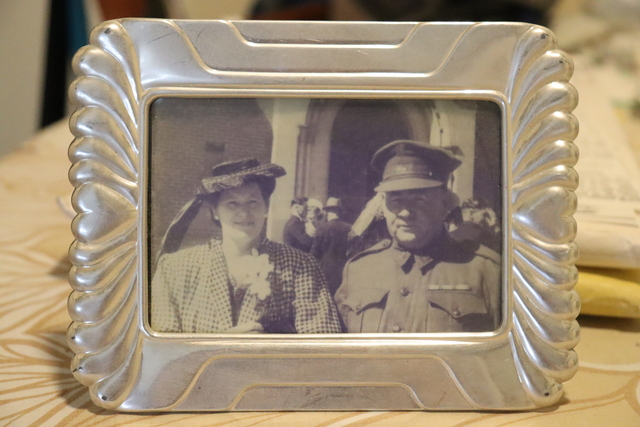According to the Red Cross, Australia granted refugee status to close to 15,000 people in the 2019-2020 financial year.
Many of these people make their home in Melbourne’s south east – an area that’s been a melting pot of newcomers for well over 100 years with more than 130 different languages being spoken in Greater Dandenong alone.
I’ve had the opportunity to speak with many of these new Australians over several years, and their stories of the battles they’ve faced to come to the country are unfathomable.
And while the physical scars of torture, starvation and stress may fade, the mental scars can remain.
Getting out of their home country is often fraught with danger.
Sam* was 19, about to turn 20, when he arrived in Australia.
Prior to that he had lived in Pakistan after his family made their escape from Afghanistan.
While he was not technically a refugee to Australia, his experience shows just how terrifying it can be to leave a warzone; he tells a harrowing tale of violence, fear and discrimination.
He was just 13 when his family left Afghanistan in the midst of a brutal conflict after the collapse of the communist state.
He says he “witnessed a lot of trauma” – from dead bodies to constant moving due to the endless fighting.
Finally, one of the rockets hit his neighbour’s house while he was outside playing. Sam remembers dust and screaming.
His family left the following day.
He recalls a frantic escape on a bus to Jalalabad. On the way, the bus was stopped by what he describes as a group of terrorists, who singled the young Sam out and mocked him, threatening him with harm and potentially death.
From Jalalabad, he and his family were crammed into trucks that carried them secretly over the border into Peshawar, in Pakistan.
“People were vomiting, there was a very bad smell, and not enough oxygen because they closed the door of the truck,” he remembered.
Many of those on the truck lost track of family members who stayed behind in Afghanistan.
They faced discrimination in Pakistan, where the local population treated Afghans with contempt. Police officers regularly bribed any Afghan people they came across.
The family spent years in poverty as getting a job as an Afghan wasn’t easy.
But it wasn’t until later in life that these challenges caught up with Sam.
In 2013, here in Australia, he had the first of a string of major panic attacks.
Medical professionals diagnosed him with severe anxiety and depression, traced at least partly back to his experience as a child in Afghanistan.
“There are a lot of other people who migrate from country to country and they’re OK with certain challenges, but probably I was not mentally ready,” Sam mused.
It’s not just the journey itself that can pose challenges; it’s also what lies ahead at the end.
Australia’s policy of indefinite detention for asylum seekers has seen people locked in detention centres for years.
It’s worth noting that Australia is a party to the United Nations’ Convention and Protocol Relating to the Status of Refugees, and that seeking asylum in Australia is not illegal.
Through conversations with advocates over several months, it’s clear that many of those locked away in Australia’s immigration detention face deteriorating mental health.
When they are released, advocates have told me that these refugees are broken people: unsure of how to operate in the world and how to pick up the pieces in a new country.
Whether their mental ill-health has been caused by the system, or whether the system has exacerbated pre-existing conditions, is hard to determine.
Dr Judy Tang is a clinical neuropsychologist and a commissioner at the Victorian Multicultural Commission, and has worked with refugees who face mental health challenges.
She says the impact of immigration detention on mental health depends on the person.
“Not everyone who has gone through traumatic experiences ends up developing mental illness or having mental health difficulties,” she explained.
“But definitely the experience can put a lot more people closer to the threshold of developing mental health difficulties.
“It’s perfectly understandable to assume that for a lot of people that traumatic experience will impact on them.”
She recalled speaking to one person who had been kept in immigration detention for several years and who had, prior to that, been incarcerated as a prisoner of war.
Stuck behind bars for much of their young adult life, the person had told Dr Tang that they felt as though they had lost the most important years of their life.
Dr Tang said it’s just one example of how the refugee experience can negatively impact on someone.
She said there should be more consideration of that impact on refugees and asylum seekers.
“We need to acknowledge that the journey they’ve had can have negative consequences and we need to support them through that and not assume that now that they’re here, everything is OK,” she said.
Part two of this story will explore some of the barriers that refugees and asylum seekers face in accessing support for their mental health once they arrive in Australia.
*Not his real name. Sam wanted to withhold his name as he does not want to add to the worry of his community.
If you need to speak with someone, please contact:
Lifeline – 13 11 14 or lifeline.org.au
Beyond Blue – 1300 22 4636 or beyondblue.org.au







